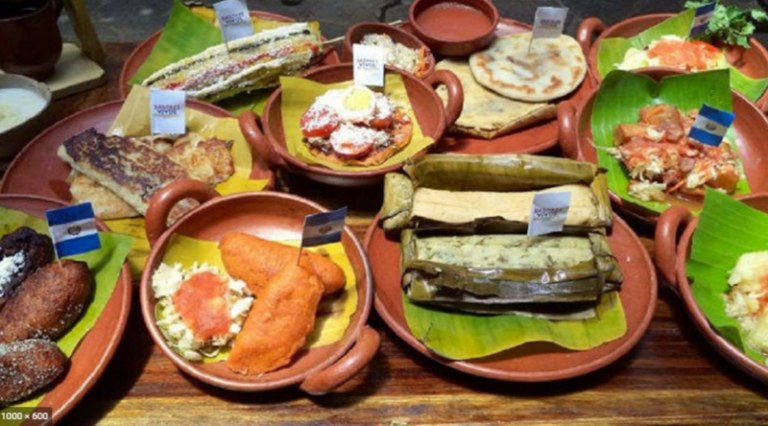Introduction: Exploring El Salvadoran cuisine
El Salvadoran cuisine is a rich fusion of pre-Columbian and Spanish culinary traditions. The country’s cuisine is heavily influenced by its geography, history, and culture. El Salvadoran food is known for its use of fresh vegetables, fruits, and herbs, as well as its abundant seafood, meats, and grains. Salvadoran cuisine is also known for its signature dish, pupusas, which are corn tortillas filled with cheese, beans, and meat.
Regional differences in Salvadoran cuisine
While Salvadoran cuisine is often seen as homogeneous, there are notable regional variations in its dishes and flavors. The country is divided into four regions: the eastern region, the central region, the western region, and the coastal region. Each region has its unique culinary traditions, ingredients, and cooking techniques that reflect the region’s history and culture.
Pupusas: A national dish with distinct regional variations
Pupusas are a staple in El Salvadoran cuisine and a beloved dish by locals and visitors alike. This national dish is made up of a thick, hand-pressed corn tortilla filled with a variety of ingredients, such as beans, cheese, meat, and vegetables. However, each region has its unique twist on the classic dish. For example, pupusas in the eastern region are often stuffed with loroco, an edible flower, while pupusas in the coastal region are commonly filled with seafood.
Coastal cuisine: Seafood and tropical fruits
El Salvador’s coastal region is known for its fresh seafood and tropical fruits. The cuisine in this region is heavily influenced by the region’s proximity to the Pacific Ocean. Common dishes in this region include ceviche, a dish made up of fresh raw fish marinated in lime juice, and fried fish served with plantains and rice.
Eastern El Salvador: Indigenous influences on cuisine
The eastern region of El Salvador is known for its indigenous influence on the cuisine. The Lenca people, who are indigenous to this area, have influenced the dishes and flavors of the region. Traditional dishes in this region include yuca con chicharrón, which is fried pork belly served with cassava, and horchata, a sweet rice-based drink.
Central El Salvador: The heartland of Salvadoran cuisine
The central region of El Salvador is known as the heartland of Salvadoran cuisine, where many traditional dishes have originated. The cuisine in this region is heavily influenced by its agricultural practices, with dishes featuring beans, corn, and rice. Some of the most famous dishes in this region include tamales, chilate, and chicken encebollado.
Western El Salvador: A fusion of cultures and flavors
The western region of El Salvador is known for its fusion of cultures and flavors. This region has been shaped by the indigenous Pipil people, the Spanish colonizers, and the Guatemalan influence. The cuisine in this region features dishes like mole, a traditional sauce made up of chili peppers and chocolate, and tamales de elote, which are tamales made with sweet corn and filled with beans and cheese.
Conclusion: Celebrating the diversity of El Salvadoran cuisine
El Salvadoran cuisine is a unique and diverse culinary experience that reflects the country’s history, culture, and geography. Each region has its unique dishes, ingredients, and cooking techniques that make El Salvadoran cuisine a true representation of the country’s rich culinary heritage. Whether you’re a fan of seafood, meat, or vegetables, El Salvadoran cuisine has something for everyone to enjoy and savor.

